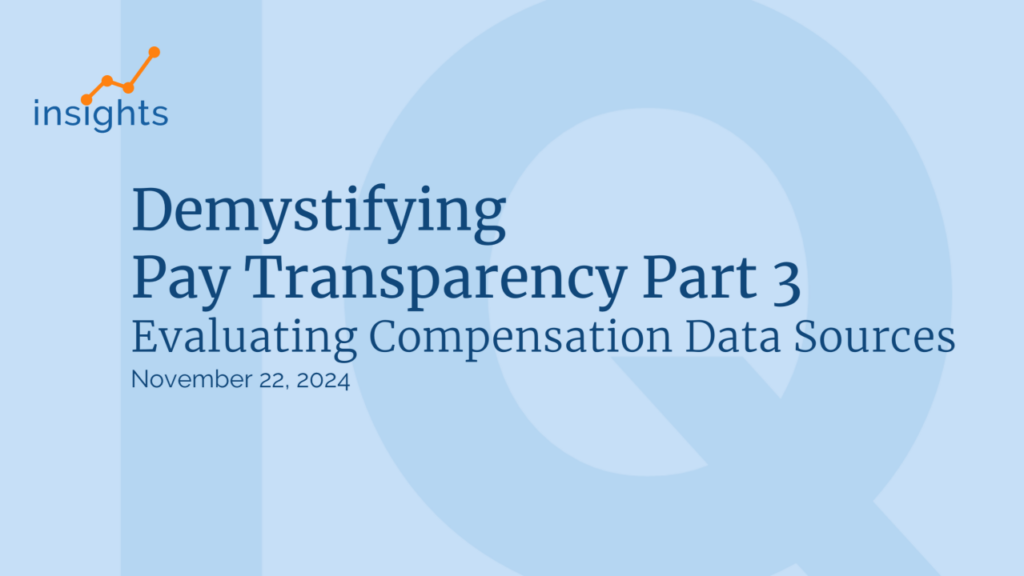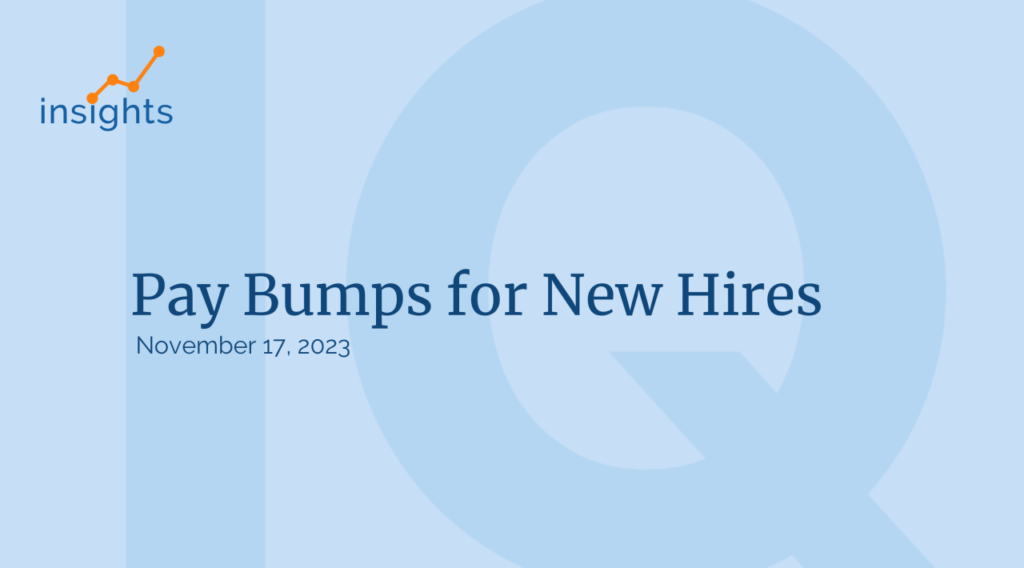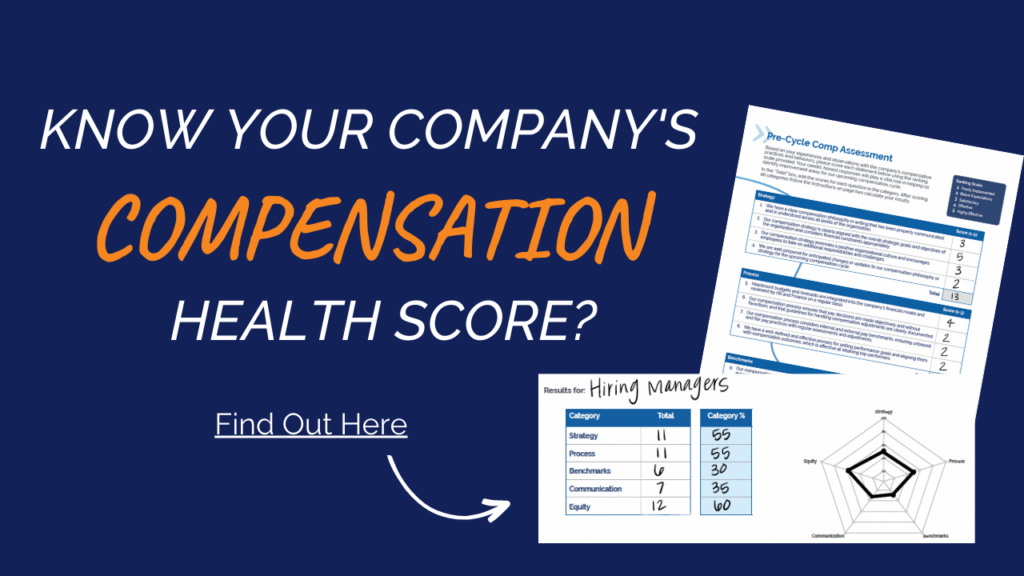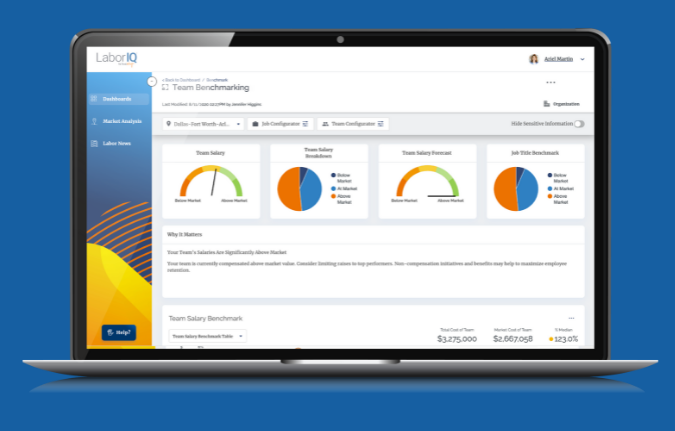The movement toward pay transparency is accelerating.
For those who haven’t stumbled across the phrase, “pay transparency,” it refers to an employer’s choice/responsibility to display a salary range with their job postings. This openly informs candidates, employees and colleagues about their company’s stance on compensation.
In the past, salaries were rarely advertised – especially in the private sector. In fact, at the time of this writing, just 17% of private companies practice pay transparency, 41% actively discouraged it and 25% even prohibited the discussion of wages.
But change is coming. Employees have long realized the disadvantages of being kept in the dark about their pay. The law is starting to reflect this, with increasing regulations surrounding pay transparency.
This article discusses the actions employers can take to prepare and turn pay transparency to their advantage.

A Quick History of Pay Transparency
In 2018, California was the first state to start the movement toward pay transparency, requiring employers to disclose pay scales to external applicants. However, this was only mandatory upon request if the applicant had completed their first interviews. Again, upon request, similar disclosure laws are followed in Maryland and Ohio.
Since 2021, several states now require employers to proactively disclose their pay scales. The exact laws vary by state. However, in Connecticut, for example, employers must disclose a wage salary range to candidates at the point of offering them the job or earlier if the applicant requests it. In contrast, in Nevada, employers must provide this information to current employees interviewing for a new role or to external applicants who have been interviewed.
On Jan. 15, 2022, New York joined nine other jurisdictions requiring pay-scale disclosure. While the law in New York isn’t in effect yet, the state has set May 15 as the deadline for businesses to include minimum and maximum salary rates in their job descriptions.
New York City and Colorado require the most upfront transparency. Employers must disclose pay ranges in job postings for new hires, transfers and promotions. This law applies to any company with more than four employees, regardless of whether the role is remote, in-person, salaried or hourly.
The U.S. isn’t the only global player following this pay transparency movement, with the UK and European Union looking to establish similar laws in the future.
Pay Transparency – Disruption or Progress?
However, the discussion around pay transparency isn’t a simple one.
For employees, the benefits are clear. There’s anecdotal evidence from some companies at the forefront of pay transparency that claims that workers are more productive and collaborative when well-informed about their compensation.
This is because employees who know they’re fairly paid are more inclined to provide employers with their best work. They’re also more likely to know who to turn to for help, as a higher salary typically indicates someone with a higher rank/more experience.
On top of that, pay transparency is an essential step toward creating equal workplace opportunities and reducing gender pay gaps. Namely, because it exposes pay injustices and, as such, better enables employees and employers to actively work against them.
On the flip side, companies may feel cause for concern. For instance, some fear introducing transparency about salaries may confuse why one employee is being paid more than another. This is especially true if the differences in responsibilities aren’t immediately obvious to workers. Needless to say, this could unduly cause employee dissatisfaction.
Change is Coming – Here’s How to Prepare
With more and more states enacting pay transparency laws, the discussion is increasingly likely to flip from if your business should disclose salaries to when.
Historically, the secrecy surrounding compensation has enabled businesses to exploit talented workers (i.e., paying them far less than they’re worth).
This is why it’s a good idea for companies paying their worker’s fair compensation to voluntarily opt in to pay transparency. This ensures you remain ahead of the curve and that your company has one less hoop to jump through should your state enact pay transparency legislation.
Here’s how to prepare:
The first and most crucial step is to look at what you’re currently paying employees. Then, assess those numbers against average salaries. The best way to do this is to undergo compensation analysis to get an insight into average market salaries for the roles, skills and locations in question.
While this requires lots of research, fortunately, there are tools available that can instantly provide this answer. For example, LaborIQ software provides comprehensive salary reports specific to the location, industry and company size. As a result, you can pinpoint the current compensation demands and how wages are predicted to rise over time. With this benchmark data at your fingertips, you can easily compare your salary offers to the market and budget for compensation changes accordingly. Then, once you know you’re offering a fair salary, you can confidently begin to reveal your pay scales on job ads.
What if You Can’t Increase Salaries?
Impending pay transparency laws are most frightening to businesses that can’t afford to pay their employees competitive rates. So what can you do to embrace transparency without fearing the loss of your employees?
One answer is to offer benefits other than pay. For instance, flexibility in remote working can make a big difference. You could also make the role more appealing by providing frequent professional development opportunities and workplace mentorship programs.
Another solution is to use regional compensation data to hire employees remotely from areas where the living costs are lower. This may enable you to pay a lower salary while offering your staff competitive pay rates.
Pay Transparency Will Continue to Accelerate in 2022
The movement toward better pay transparency isn’t slowing down. In fact, additional states, including Massachusetts and South Carolina, are considering similar laws facilitating the disclosure of pay ranges to job applicants.
These laws protect employees and operate in the spirit of fairness and honesty. With compensation analysis tools, businesses can confidently prepare and provide better pay transparency and remain competitive.
Learn more about how our compensation software can help your organization prepare for pay transparency changes and design compensation packages that can help recruit and retain top talent.










































